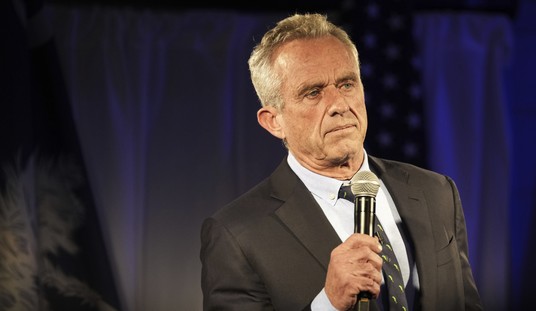The meeting, held in Salt Lake City with 50 lawmakers from 9 states, was in the works long before Cliven Bundy’s standoff with the BLM last week. But it points to a growing movement out west that is advocating a return of extremely valuable, oil and mineral rich lands currently under federal management to state control.
It’s time for Western states to take control of federal lands within their borders, lawmakers and county commissioners from Western states said at Utah’s Capitol on Friday.
More than 50 political leaders from nine states convened for the first time to talk about their joint goal: wresting control of oil-, timber -and mineral-rich lands away from the feds.
“It’s simply time,” said Rep. Ken Ivory, R-West Jordan, who organized the Legislative Summit on the Transfer for Public Lands along with Montana state Sen. Jennifer Fielder. “The urgency is now.”
Utah House Speaker Becky Lockhart, R-Provo, was flanked by a dozen participants, including her counterparts from Idaho and Montana, during a press conference after the daylong closed-door summit. U.S. Sen. Mike Lee addressed the group over lunch, Ivory said. New Mexico, Arizona, Nevada, Wyoming, Oregon and Washington also were represented.
The summit was in the works before this month’s tense standoff between Nevada rancher Cliven Bundy and the Bureau of Land Management over cattle grazing, Lockhart said.
“What’s happened in Nevada is really just a symptom of a much larger problem,” Lockhart said.
Fielder, who described herself as “just a person who lives in the woods,” said federal land management is hamstrung by bad policies, politicized science and severe federal budget cuts.
“Those of us who live in the rural areas know how to take care of lands,” Fielder said, who lives in the northwestern Montana town of Thompson Falls.
“We have to start managing these lands. It’s the right thing to do for our people, for our environment, for our economy and for our freedoms,” Fielder said.
Idaho Speaker of the House Scott Bedke said Idaho forests and rangeland managed by the state have suffered less damage and watershed degradation from wildfire than have lands managed by federal agencies.
Heer’s a listing of the percentage of state land owned by the feds.
This map details the percentage of state territory owned by the federal government. The top 10 list of states with the highest percentage of federally owned land looks like this:
Nevada 84.5%
Alaska 69.1%
Utah 57.4%
Oregon 53.1%
Idaho 50.2%
Arizona 48.1%
California 45.3%
Wyoming 42.3%
New Mexico 41.8%
Colorado 36.6%Notable is that all these states are in the West (except Alaska, which strictly speaking is also a western state, albeit northwestern). Also notable is the contrast between the highest and the lowest percentages of federal land ownership. The US government owns a whopping 84.5% of Nevada, but only a puny 0.4% of Rhode Island and Connecticut. The lowest-percentage states are mainly in the East, but some are also in the Midwest and in the South:
Connecticut 0.4%
Rhode Island 0.4%
Iowa 0.8%
New York 0.8%
Maine 1.1%
Kansas 1.2%
Nebraska 1.4%
Alabama 1.6%
Ohio 1.7%
Illinois 1.8%Even the 10th place is still below the two percent mark. One territory is not specified on the map: Washington D.C. It could be argued that this is the only main administrative division of US territory to be fully owned by the federal government. It could, but that would be wrong – and upsetting to those private citizens who own part of the nation’s capital in the form of their real estate. It would be more correct to state that the District of Columbia by default falls under the direct tutelage of the Federal Government.
Here are the primary federal land holders:
Department of the Interior
Bureau of Land Management
United States Fish and Wildlife Service
National Park Service
Bureau of Indian Affairs
Bureau of Reclamation
Department of Agriculture
United States Forest Service
United States Department of Defense
United States Army Corps of Engineers
Tennessee Valley Authority
A short legislative historyof how the government came to own half of the western United States:
It is sort of an accident of history and because of the whims of Congress that the federal government controls all that land. In the mid-1800s, lawmakers passed laws encouraging settlers to colonize the West, with the idea of carving up the new U.S. territories into privately held parcels. Starting with Theodore Roosevelt, though, U.S. lawmakers started to conserve public lands for the public with the creation of the national parks.
In 1934, Congress created the U.S. Grazing Service to manage cattle and sheep grazing on public lands, and in 1946 the Grazing Service was combined with the General Land Office to create the BLM. In 1976, Congress passed the Federal Land Policy and Management Act, formally setting aside federal public lands for multiple public uses, including recreation, ranching, and mining. The BLM, Forest Service, and National Park Service have been juggling those competing interests ever since.
The argument isn’t over federal control and management of national parks, although some would argue national park land is far too expansive and includes land that could be put to better use than what is now. More controversial are “wilderness” areas on which little or no development at all is allowed — not even roads.
Clearly, the real beef is with the feds owning large swaths of land that, if managed properly, would yield a lot of revenue for states from the granting of oil and mineral rights. So what’s the problem? There’s a belief among some in Washington that the states would allow developers to run wild. This is ridiculous, as is the idea that states don’t have the competency to manage their own lands. Many western states have been managing lands the size of small countries. And perhaps more than bureaucrats in Washington, the people out west have a profound respect for the land — and for nature. It seems silly to think they would suddenly allow developers to rape the land, stripping it willy nilly.
As usual, this is about power and control. Land is wealth, and the question of whether that wealth should be in the hands of the states or Washington needs to be addressed.









Join the conversation as a VIP Member